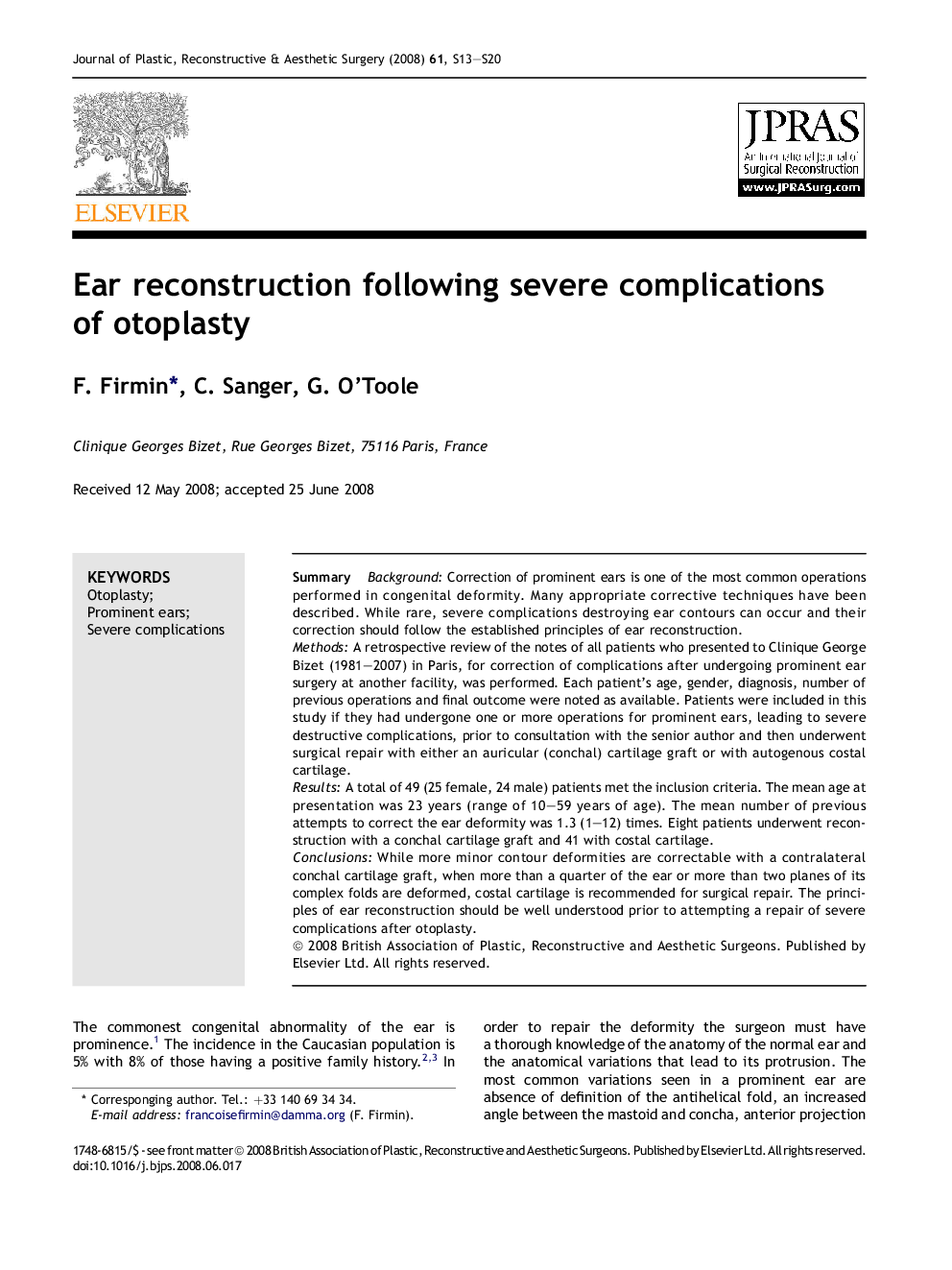| Article ID | Journal | Published Year | Pages | File Type |
|---|---|---|---|---|
| 4121383 | Journal of Plastic, Reconstructive & Aesthetic Surgery | 2008 | 8 Pages |
SummaryBackgroundCorrection of prominent ears is one of the most common operations performed in congenital deformity. Many appropriate corrective techniques have been described. While rare, severe complications destroying ear contours can occur and their correction should follow the established principles of ear reconstruction.MethodsA retrospective review of the notes of all patients who presented to Clinique George Bizet (1981–2007) in Paris, for correction of complications after undergoing prominent ear surgery at another facility, was performed. Each patient's age, gender, diagnosis, number of previous operations and final outcome were noted as available. Patients were included in this study if they had undergone one or more operations for prominent ears, leading to severe destructive complications, prior to consultation with the senior author and then underwent surgical repair with either an auricular (conchal) cartilage graft or with autogenous costal cartilage.ResultsA total of 49 (25 female, 24 male) patients met the inclusion criteria. The mean age at presentation was 23 years (range of 10–59 years of age). The mean number of previous attempts to correct the ear deformity was 1.3 (1–12) times. Eight patients underwent reconstruction with a conchal cartilage graft and 41 with costal cartilage.ConclusionsWhile more minor contour deformities are correctable with a contralateral conchal cartilage graft, when more than a quarter of the ear or more than two planes of its complex folds are deformed, costal cartilage is recommended for surgical repair. The principles of ear reconstruction should be well understood prior to attempting a repair of severe complications after otoplasty.
